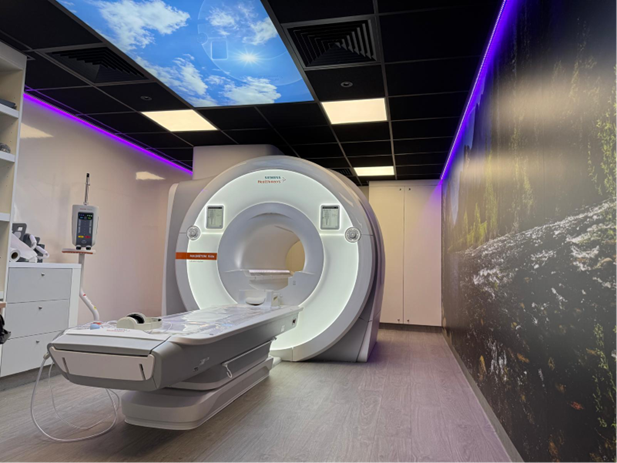
In Magnetic Resonance Imaging (MRI), 3T scanners are the most powerful systems that can be used in a clinical setting and recently, patients at Wrightington, Wigan and Leigh Teaching Hospitals NHS Foundation Trust (WWL) have been able to access this service at the Trust’s Wrightington Hospital site.
The new unit, situated near to Wrightington’s newest theatres, includes two units housing the scanner itself and the support services. Alongside this, there is also a newly updated waiting area and reception to improve the patient experience when visitors arrive at the department.
The new service will not only benefit patients requiring MRI from within the Wigan Borough, but it will also allow the Trust to support Radiology Departments from around Greater Manchester and the wider North West region.
It will also help to support research at Wrightington Hospital, ensuring that cutting edge techniques are developed and performed at our Trust, opening opportunities to collaborate with clinical research and industry partners around the country.
In addition, the new scanner will create an increase in capacity of approximately 20% due to the higher field strength and the use of cutting-edge AI technology. This will result in an additional 1,400 MRI appointments being created annually. Due to this, we have seen a decrease in patient waiting times, meaning a much more positive experience during what can sometimes be a daunting examination.
3T MRI is considered the gold standard for high-definition orthopaedic imaging and, as Wrightington Hospital is an Orthopaedic Centre of Excellence, it is vitally important to ensure that the Trust has the best possible technology to care for our patients and support our surgical colleagues. The new MRI system will enable WWL to perform new and existing techniques that patients would have otherwise had to travel to other sites in the region. One such example of this is the reduction of Arthrogram procedures we are now performing. Arthrography is a somewhat invasive technique, involving a contrast agent being injected directly into a joint, which can be an uncomfortable process for a patient. However, due to the significant increase in image quality that the new 3T MRI system provides, we have been able to reduce the requirement for patients to undergo these procedures by approximately 80%, and reduced the waiting time for this procedure, improving efficiency in the wider radiology department.
The project has been an overwhelming success for the Trust, largely achieved by fantastic team working between our Radiology and Estates colleagues.